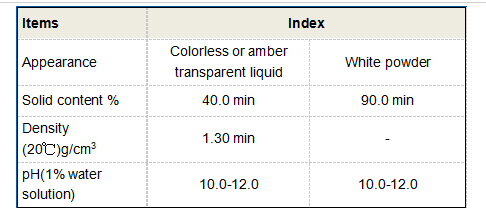Chemical Processes in Water Treatment Coagulation and Flocculation Techniques Explained
Chemical Coagulation and Flocculation in Water Treatment
Water is a vital resource for all forms of life, and ensuring its quality is paramount in maintaining public health and environmental sustainability. One of the most effective methods of treating water, particularly in municipal and industrial applications, is through the processes of chemical coagulation and flocculation. These processes are essential in removing suspended solids, colloidal materials, and various contaminants from water, thereby improving its clarity and quality.
Understanding Coagulation and Flocculation
Coagulation and flocculation are closely linked processes used together in water treatment. Coagulation involves the addition of coagulants—chemicals that help destabilize dissolved particles in the water. Common coagulants include aluminum sulfate (alum), ferric chloride, and polyaluminum chloride. These substances work by neutralizing the electric charges of suspended particles, which typically repel each other and remain suspended in water.
Once coagulation occurs, the next phase, flocculation, takes place. In this stage, gentle mixing helps the destabilized particles collide and aggregate into larger clusters known as flocs. This process significantly increases the size of the particles, making them more easily removable from the water through sedimentation or filtration. The effectiveness of flocculation depends on several factors, including mixing time, energy, and the presence of other substances in the water.
The Importance of Coagulation and Flocculation
The significance of coagulation and flocculation in water treatment cannot be understated. These processes are foundational in reducing turbidity, which is a measure of the cloudiness of water caused by large numbers of individual particles. High levels of turbidity can harbor pathogens and harmful chemicals, making water unsafe for consumption.
By removing these particles, coagulation and flocculation also enhance the efficacy of subsequent water treatment steps, such as disinfection. They help eliminate pathogens such as bacteria, viruses, and protozoa, reducing the risk of waterborne diseases. Moreover, these processes can also be instrumental in removing various contaminants, including heavy metals and organic pollutants, thus contributing to cleaner, safer water.
The Coagulation-Flocculation Process
chemical coagulation and flocculation water treatment

The coagulation-flocculation process typically involves several steps. It begins with the rapid addition of coagulants to the water. This can be done through rapid mixing, ensuring that the coagulant is evenly distributed throughout the water. The rapid mixing helps in the initial contact between coagulants and suspended particles.
Following this, the water undergoes a slow mixing phase, where the flocculation occurs. During this stage, the energy input is reduced to allow for gentle mixing, promoting the aggregation of smaller particles into larger flocs. The size and density of these flocs are critical, as larger, denser flocs tend to settle more quickly during sedimentation.
After a designated period of flocculation, the water is allowed to stand, enabling the larger flocs to settle to the bottom of the sedimentation basin. This leaves behind clear water that can proceed to additional treatment stages, such as filtration and disinfection.
Challenges and Considerations
While chemical coagulation and flocculation are effective technologies, they do come with challenges. The selection of coagulants must be based on the specific characteristics of the water being treated, including its pH, turbidity level, and the types of contaminants present. Some coagulants can produce sludge that requires proper management and disposal, adding to operational costs.
Moreover, environmental considerations must be taken into account, as the chemicals used can impact local ecosystems if not managed appropriately. Therefore, ongoing research and development are necessary to optimize coagulation and flocculation processes, improve their efficiency, and minimize their environmental footprint.
Conclusion
In summary, chemical coagulation and flocculation are critical processes in water treatment that help ensure safe and clean water supplies. By effectively removing suspended solids and other contaminants, these methods play a significant role in protecting public health and the environment. As water treatment technologies continue to evolve, the refinement of coagulation and flocculation practices will remain essential to meet growing water quality demands and to safeguard our most precious resource water.
-
Water Treatment with Flocculant Water TreatmentNewsJun.12,2025
-
Polymaleic AnhydrideNewsJun.12,2025
-
Polyaspartic AcidNewsJun.12,2025
-
Enhance Industrial Processes with IsothiazolinonesNewsJun.12,2025
-
Enhance Industrial Processes with PBTCA SolutionsNewsJun.12,2025
-
Dodecyldimethylbenzylammonium Chloride SolutionsNewsJun.12,2025





